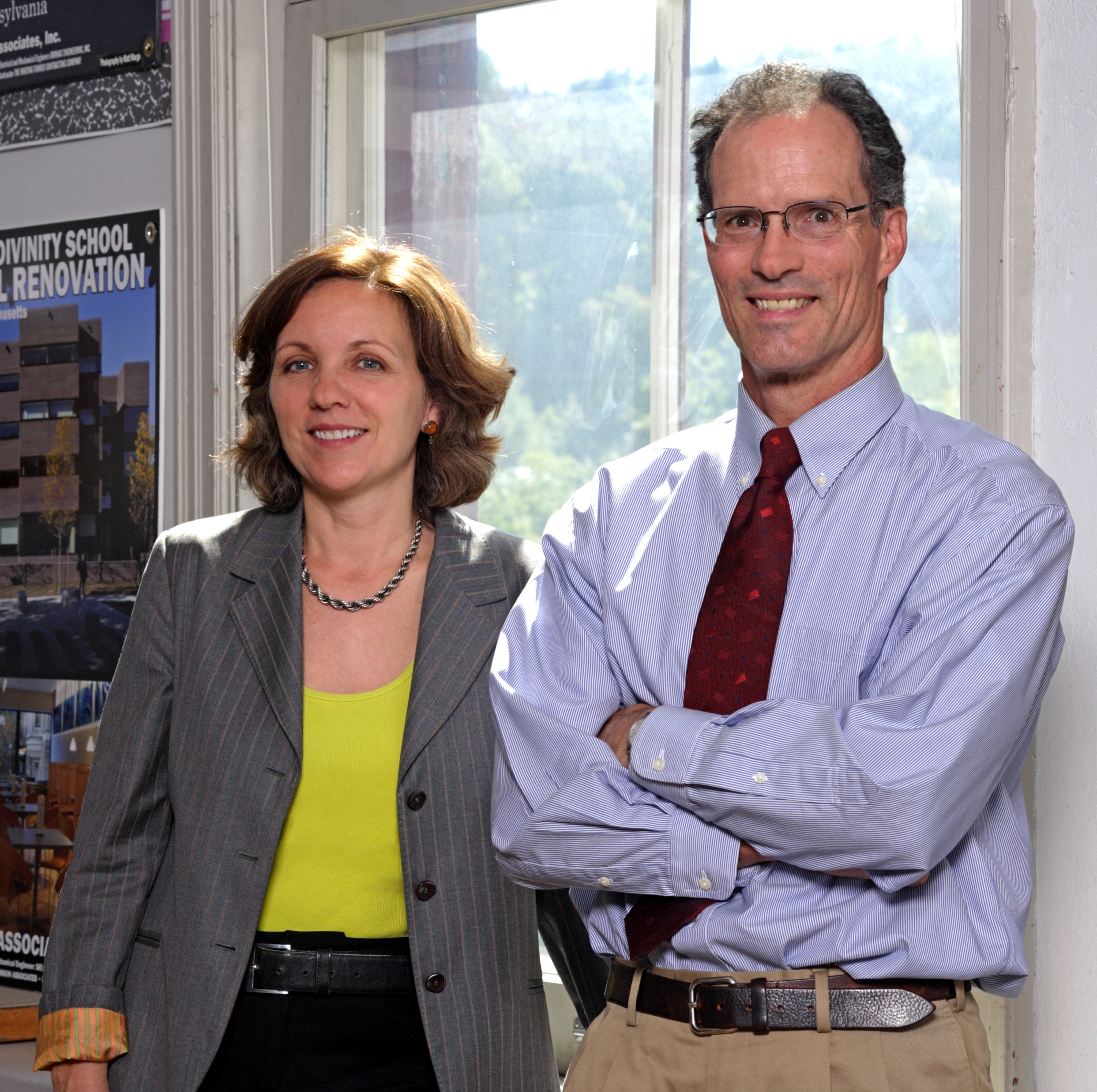The design firm Venturi, Scott Brown and Associates, Inc. has become VSBA, LLC and is now under the leadership of president and principal Daniel K. McCoubrey. McCoubrey, together with fellow principal Nancy Rogo Trainer, will build on architectural and planning principles instituted by founders Robert Venturi and Denise Scott Brown.
Dan McCoubrey was principal-in-charge for the Curtis Institute of Music’s new Lenfest Hall and for additions and renovations at the Allentown Art Museum. He recently directed a series of projects for Dumbarton Oaks in Washington, D.C., including a new research library. He has led projects for Penn, Harvard, Yale, Dartmouth, the Barnes Foundation, and the Museum of Contemporary Art, San Diego, among others. A graduate of Penn’s School of Architecture, he has taught at Drexel since 1986, lectures widely, and is a member of the Philadelphia Historical Commission Architectural Review Committee.
Nancy Rogo Trainer was recently principal-in-charge for renovation of historic Fay House at the Radcliffe Institute at Harvard, where she directed renovation of Schlesinger Library and campus planning. She led campus plans for Villanova, Bryn Mawr, and Haverford and designed projects at Harvard Divinity School and Bryn Mawr, among others. A graduate of Penn’s School of Architecture, Nancy teaches at Drexel, lectures extensively, and is a member of the Philadelphia City Planning Commission.
After over fifty years as one of the world’s most renowned architects, Bob Venturi has retired from practice, while Denise Scott Brown continues to publish and present her work. +
Related Stories
| Dec 28, 2014
The future of airport terminal design: destination status, five-star amenities, stress-free travel
Taking a cue from the hospitality industry, airport executives are seeking to make their facilities feel more like destinations, writes HOK's Richard Gammon.
| Dec 28, 2014
10 key design interventions for a healthier, happier, and more productive workplace
Numerous studies and mountains of evidence confirm what common sense has long suggested: healthy, happier workers are more productive, more likely to collaborate with colleagues, and more likely to innovate in ways that benefit the bottom line, writes Gensler's Kirsten Ritchie.
| Dec 28, 2014
7 fresh retail design strategies
Generic ‘boxes’ and indifferent service won’t cut it with today’s savvy shoppers. Retailers are seeking a technology-rich-but-handmade vibe, plus greater speed to market and adaptability.
| Dec 28, 2014
Workplace design trends: Make way for the Millennials
Driven by changing work styles, mobile technology, and the growing presence of Millennials, today’s workplaces are changing, mostly for the better. We examine the top office design trends.
| Dec 28, 2014
AIA: Commercial glass façade and door systems
When it comes to selecting fenestration systems—particularly glass facades and door systems—a number of factors come into play, requiring a thorough evaluation of a project’s individual requirements.
| Dec 28, 2014
10 essential habits of successful architects
Want to take the next step as a design processional? John Gresko, Senior Project Architect with HDR, explores the traits that many great architects possess.
| Dec 28, 2014
10 unglamorous things architects do
An acquaintance recently asked me about the kinds of things I did on a day-to-day basis at work, anticipating a response loaded with enviable activities. She was wrong, writes HDR's John Gresko.
| Dec 28, 2014
New trends in ceiling designs and materials [AIA course]
A broad array of new and improved ceiling products offers designers everything from superior acoustics and closed-loop, recycled content to eased integration with lighting systems, HVAC diffusers, fire sprinkler heads, and other overhead problems. This course describes how Building Teams are exploring ways to go beyond the treatment of ceilings as white, monolithic planes.
| Dec 27, 2014
7 ways to enhance workplace mobility
The open work environment has allowed owners to house more employees in smaller spaces, minimizing the required real estate and capital costs. But, what about all of their wireless devices?
| Dec 27, 2014
'Core-first' construction technique cuts costs, saves time on NYC high-rise project
When Plaza Construction first introduced the concept of "core first" in managing the construction of a major office building, the procedure of pouring concrete prior to erecting a steel frame had never been done in New York City.

















